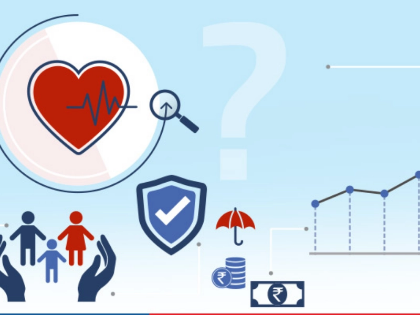Options for Lowering Your Down Payment Other Than Mortgage Insurance
Setting aside money automatically from each paycheck is one method to achieve your down payment target. Other tactics include trimming out frivolous costs, such as paying for a gym membership or meal delivery service, and preserving any windfalls, such as bonuses or tax returns. There are some jumbo mortgage loan programs that don't require PMI if you put down less than 20 percent, but there can be additional fees involved. Purchasing mortgage protection life insurance is an additional way to help you stay away from PMI.
1. Assistance with Down Payment

2. Life Insurance for Mortgages
 Mortgage life insurance is a sort of life insurance that is intended to pay off a borrower's mortgage debt in the event that they pass away before their home loan is settled. It is also referred to as credit life or reduced-term insurance. For homeowners who want to make sure their mortgage is paid off in the event of their death and have modest family costs, it can be a compelling alternative. Mortgage life insurance is often not a wise option, though, for families with other large financial commitments, such as retirement savings and college funds for their children.
Rather than life insurance firms, banks and mortgage lenders are frequently the ones who sell mortgage life insurance policies. Mortgage life insurance coverage pays money directly to your lender in the case of death or disability, as opposed to conventional life insurance. This is a significant distinction from standard life insurance, which helps the beneficiaries of the borrowers.
For those who cannot qualify for fully underwritten policies due to health concerns, a mortgage life insurance policy might be an appealing option compared to other types of life insurance because it typically does not require a medical exam and may exclude certain health conditions. Furthermore, many mortgage life insurance plans may offer guaranteed acceptance, which expedites the underwriting procedure for applicants.
Mortgage life insurance is a sort of life insurance that is intended to pay off a borrower's mortgage debt in the event that they pass away before their home loan is settled. It is also referred to as credit life or reduced-term insurance. For homeowners who want to make sure their mortgage is paid off in the event of their death and have modest family costs, it can be a compelling alternative. Mortgage life insurance is often not a wise option, though, for families with other large financial commitments, such as retirement savings and college funds for their children.
Rather than life insurance firms, banks and mortgage lenders are frequently the ones who sell mortgage life insurance policies. Mortgage life insurance coverage pays money directly to your lender in the case of death or disability, as opposed to conventional life insurance. This is a significant distinction from standard life insurance, which helps the beneficiaries of the borrowers.
For those who cannot qualify for fully underwritten policies due to health concerns, a mortgage life insurance policy might be an appealing option compared to other types of life insurance because it typically does not require a medical exam and may exclude certain health conditions. Furthermore, many mortgage life insurance plans may offer guaranteed acceptance, which expedites the underwriting procedure for applicants.
3. Insurance for Term Life
 Mortgage life insurance is marketed as a way to reduce down payments, but its true purpose is to benefit lenders rather than borrowers. It can offer a death benefit, similar to other life insurance policies, which beneficiaries or surviving family members can utilize to settle the mortgage debt upon the borrower's passing. The money from a term life policy's death benefit, on the other hand, can be used for any purpose, but the majority of the time, the proceeds from a mortgage insurance policy go straight to the bank. This is the main distinction between life insurance and mortgage protection.
Furthermore, because mortgage life insurance is more directly correlated with your mortgage balance than standard life insurance, it frequently has higher premiums than the latter. Furthermore, this kind of insurance is effectively interest-only mortgage protection that is typically not worth the cost because the payout decreases as your principle lowers.
You can receive a higher coverage amount with a standard life insurance policy, which can be used to settle your mortgage obligation and cover any additional costs your beneficiary or beneficiaries may decide to incur. They might pay off credit card debt, auto loans, and other commitments and debts, for example, by taking up a second mortgage or using the proceeds in other ways.
Mortgage life insurance is marketed as a way to reduce down payments, but its true purpose is to benefit lenders rather than borrowers. It can offer a death benefit, similar to other life insurance policies, which beneficiaries or surviving family members can utilize to settle the mortgage debt upon the borrower's passing. The money from a term life policy's death benefit, on the other hand, can be used for any purpose, but the majority of the time, the proceeds from a mortgage insurance policy go straight to the bank. This is the main distinction between life insurance and mortgage protection.
Furthermore, because mortgage life insurance is more directly correlated with your mortgage balance than standard life insurance, it frequently has higher premiums than the latter. Furthermore, this kind of insurance is effectively interest-only mortgage protection that is typically not worth the cost because the payout decreases as your principle lowers.
You can receive a higher coverage amount with a standard life insurance policy, which can be used to settle your mortgage obligation and cover any additional costs your beneficiary or beneficiaries may decide to incur. They might pay off credit card debt, auto loans, and other commitments and debts, for example, by taking up a second mortgage or using the proceeds in other ways.
4. Consolidation of Second Mortgages
 With piggyback mortgages, also known as 80/10/10 or 75/20/9 loans, a traditional first mortgage and a second mortgage are combined to enable purchasers to lower the amount of their down payment. With this combination, purchasers can qualify for a bigger conventional mortgage than they could have with a 20% down payment, and private mortgage insurance is no longer necessary.
For these loans, you need to have a debt-to-income ratio of no more than 36% and a credit score of at least 680 to 700. Additionally, because there are two mortgages involved, the borrowers will be responsible for covering both loan closing expenses. Any savings they might have anticipated from forgoing PMI payments could be offset by this.
Although these financing choices can be beneficial to purchasers, not all applicants will be approved for them. Make sure to discuss your options with a mortgage lender and ask for current rates if you're considering using any of these to reduce your down payment. They are able to assist you in calculating which course of action is most advantageous given your financial circumstances.
Remember that taking out a piggyback loan may make it more difficult to refinance your primary mortgage later on because approval from both lenders is required. Although it might not be an issue right now, keep that in mind for the future.
With piggyback mortgages, also known as 80/10/10 or 75/20/9 loans, a traditional first mortgage and a second mortgage are combined to enable purchasers to lower the amount of their down payment. With this combination, purchasers can qualify for a bigger conventional mortgage than they could have with a 20% down payment, and private mortgage insurance is no longer necessary.
For these loans, you need to have a debt-to-income ratio of no more than 36% and a credit score of at least 680 to 700. Additionally, because there are two mortgages involved, the borrowers will be responsible for covering both loan closing expenses. Any savings they might have anticipated from forgoing PMI payments could be offset by this.
Although these financing choices can be beneficial to purchasers, not all applicants will be approved for them. Make sure to discuss your options with a mortgage lender and ask for current rates if you're considering using any of these to reduce your down payment. They are able to assist you in calculating which course of action is most advantageous given your financial circumstances.
Remember that taking out a piggyback loan may make it more difficult to refinance your primary mortgage later on because approval from both lenders is required. Although it might not be an issue right now, keep that in mind for the future.








